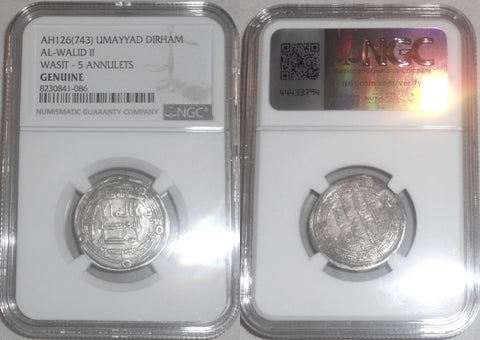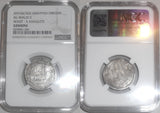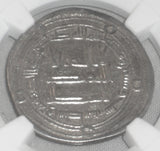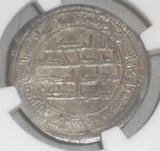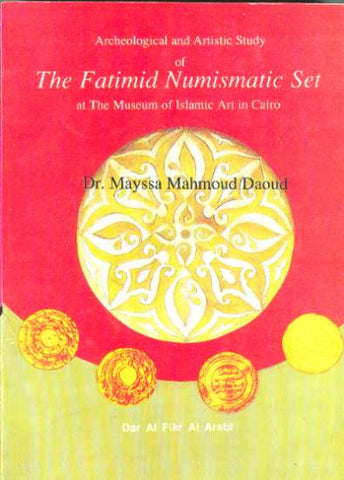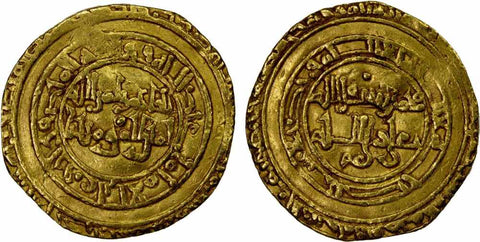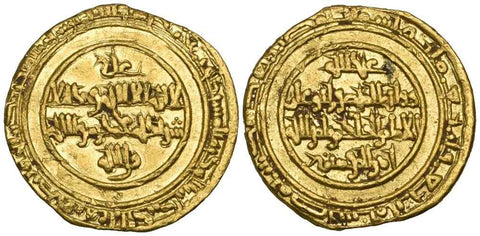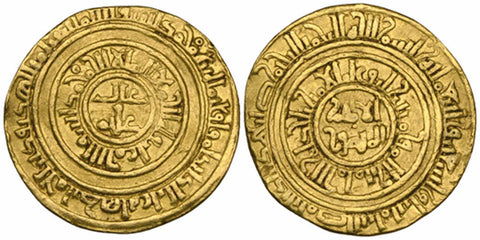743 Islamic Coin Umayyad Silver Dirham al-Walid II 126 AHH Wasit 5 Annulets VF++
Description: A nicely toned very fine or better Umayyad silver dirham struck in 126 AH (743 AD) during the reign of the Caliph al-Walid II son of Yazid II, who ruled the Islamic world in the period 125-126 AH (743 AD). According to Album, dirham coins struck in Wasit in 126 AH having 5 annulets in the margin are the only coins that can be securely attributed to al-Walid II. This coin shows the date of striking as 126 AH, the mint as Wasit, and has five annulets in the margin. This beautiful coin is nicely toned with some encrusted dirt along the edges. It also has some minor scratches to the surface of the reverse. The coin has a very pleasing appearance and looks much better than the photos suggest. The coin comes in a plastic slab by NGC with the designation GENUINE. A beautiful coin with a nice toned appearance. Please carefully review the photos as they are part and parcel of our description.
Date: Struck 126 AH or 743 AD.
Mint: The coin clearly indicates the mint as al Wasit in current day Iraq.
Size and weight: This is a silver dirham and is ~24 mm in diameter.
References: It is Album 138 with rarity designation "S", is listed in Al-Ush book titled Arab Islamic Coins Preserved in The National Museum of Qatar as number 1005-1007, and is listed in Wilkes as #297.
Condition: The coin comes in a plastic slab by NGC with the designation GENUINE. A beautiful coin with a nice toned appearance. I would grade this coin as very fine or better with a well centered strike and beautiful Calligraphy. The coin is beautiful, nicely toned with some encrusted dirt along the edges. It has minor wear throughout commensurate with its age and circulated status. It also has some minor scratches to the surface as well as some minor bag marks. It very readable and its calligraphy is well struck. It is much better than the photos suggest. Please see photos to appreciate the quality of this coin and for additional condition information.
Historic Perspective: The Muslim Arabs used existing gold and silver coinage in lands they conquered. At that time the nascent Islamic nation did not have a monetary system and did not strike neither gold nor silver coins, instead the conquering Arabs used the Byzantine monetary system already existing in Egypt for most of the gold coins and the Sassanian monetary system already existing in Iran for most silver coins with minor modifications. In 77 AH (699 AD) Abd al-Malik Ibn Marwan the Umayyad caliph instituted a monetary system and began striking the first Islamic coins including the gold Dinar. The dinar weighed 4.25 grams, or one mithqal, of the highest purity gold possible. At the time the center of power and the main gold coin mint was located in Dimishq (current day Damascus in Syria).

